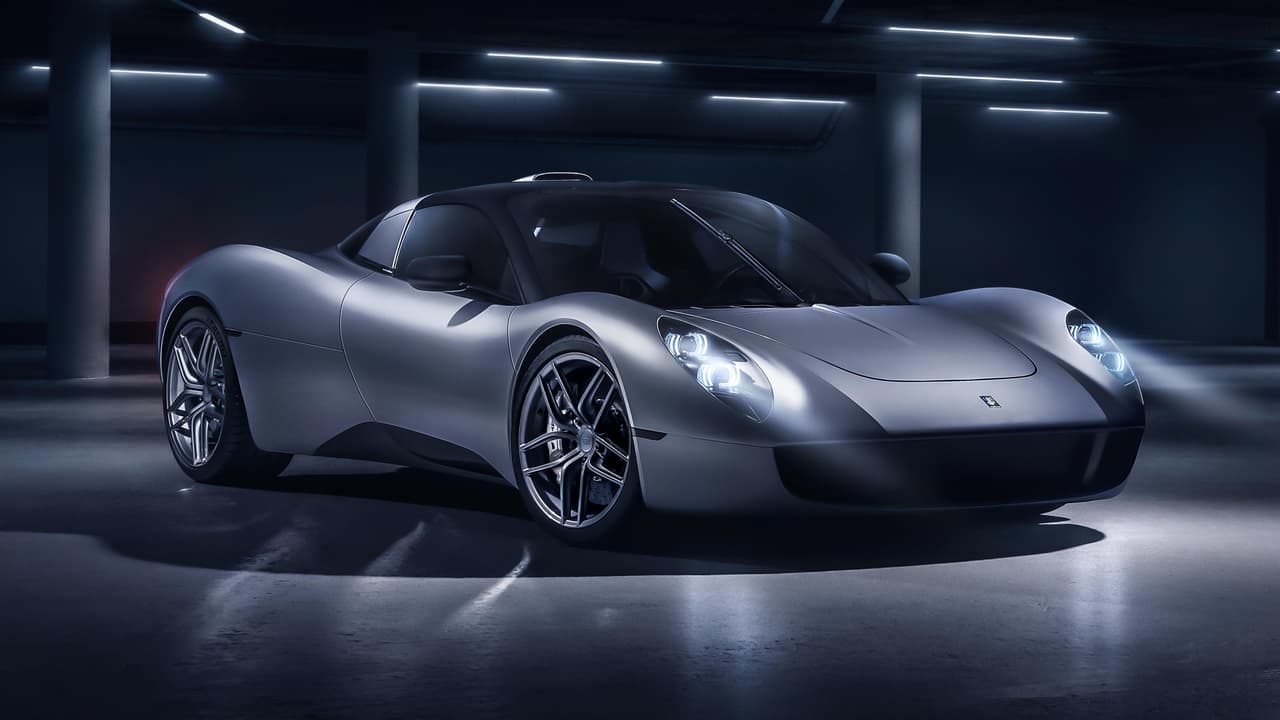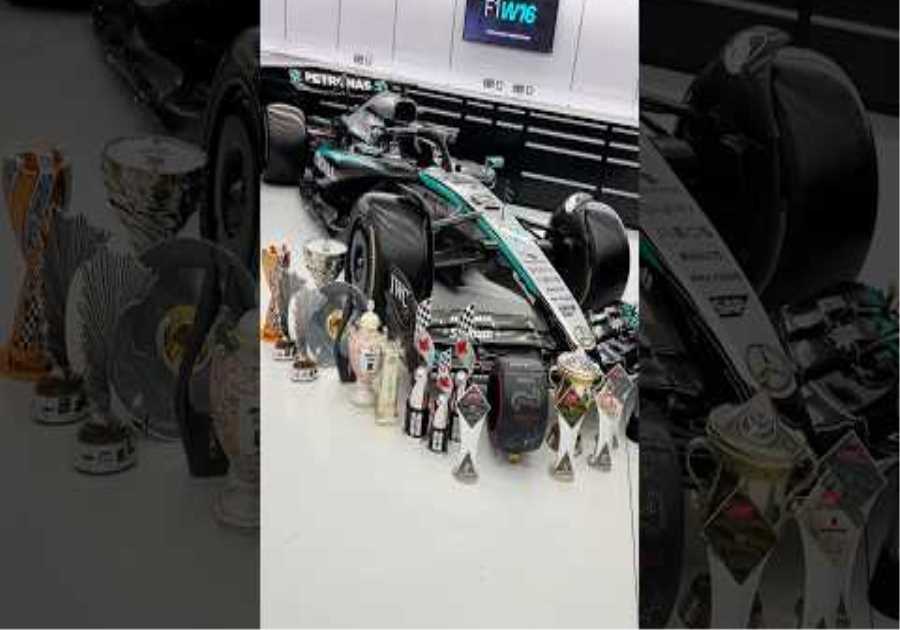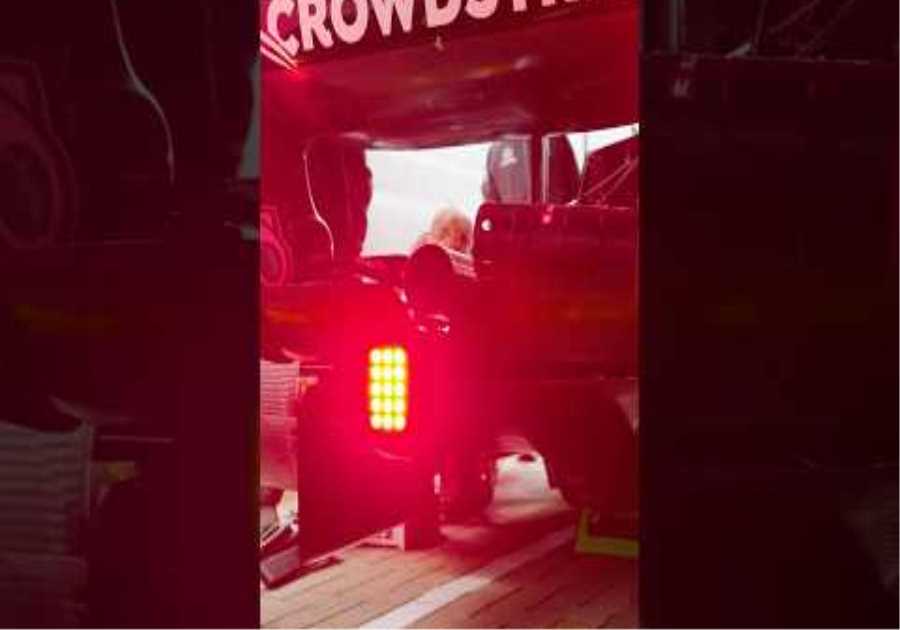
first look
£1.4m T.33 is Murray’s take on a day-to-day supercar… that’ll still rev to 10,500rpm
Is the Gordon Murray imprimatur the automotive equivalent of Willy Wonka’s golden ticket? The man responsible for many of the greatest Formula One cars – check the Brabham BT52 for starters – and who then gave us the most uncompromising road car ever in the shape of the McLaren F1, could have his feet up by now, listening to his beloved Bob Dylan records.
But no. First came the GMA T.50, the fabled F1 reimagined with 30 years’ worth of technological advancement and powered by a 3.9-litre Cosworth naturally aspirated V12 that can rev to an ear-splitting 12,000rpm. Now welcome phase two of the plan for global domination via pure driving enjoyment, the T.33. So what’s the helicopter pitch here?
Advertisement – Page continues below
“With the T.33, our second all-new car, we gave ourselves a very clear brief,” Murray says. “To create another timeless design. It has been designed and engineered to the same exacting standards as our T.50, with the same emphasis on driver focus, performance, lightweight and superlative, pure design, but the outcome is a very different motor car . This is a car where comfort, effortless performance and day-to-day usability are even more front and center in its character.”
There are a few interesting things to unpack here. Firstly, this is a GMA car in which its creator – the premier technical and engineering wizard of our time – really levels up on the styling side of things. Secondly, for someone with such a laser focus on driving dynamics and reducing mass, Murray is obsessed with luggage space and utility. Thirdly, there’s something very cool about his insistence on calling the T.33 a ‘motor car’. And boy does this car have a motor…
But first, the way it looks. TG.com is visiting GMA’s new Surrey HQ – a former laboratory facility that sits in 54 acres of prime real estate – and as we head to the underground parking area, Murray reels off the cars he really loves. It’s a strong list, as you would imagine, and heavy on the Sixties vibe: Alfa Romeo TZ and T33 Stradale, De Tomaso Vallelunga, Ferrari Dino 206 SP, Lamborghini Miura, Porsche 904… some of the prettiest cars ever made, in other words , elfin, graceful and interactive. “Why do they still look good now? It’s all about their size and proportion,” Murray says, before clarifying the new car’s positioning. “The T.50 is the halo car, and always will be. There will never be another one of those. So what do you do after that while sticking to your promise of only making 100 of any model?”
When you have the greatest V12 in the entire history of internal combustion, you’d be mad not to use it again
Advertisement – Page continues below
This. Somehow he and his team have managed to channel the spirit of the cars listed above without the end result looking remotely retro. Unlike the T.50, this one’s a two-seater, and it does without that car’s enormous rear fan, so it’s more classically proportioned. It’s still a full-blooded supercar and as you’d expect highly functional and hugely efficient, but it also speaks of an era before aerodynamics or the trend for lots of slats and ducts polluted the visuals. The T.33 is impressively pure in execution.
“It’s not wide or big by modern supercar standards,” Murray continues. “The highest point here – at the top of the front wings – coincides exactly with the front axle so you can place the car perfectly. Forward visibility is also fantastic. I wanted the lights to be one above the other, like they used to be “Just because you can do certain things with LEDs people are going bananas. At the rear we’ve deliberately kept the tail lamps far apart. A lamp’s a lamp, why try to make it into anything else? Same with trapezoidal exhausts. Just do.” a proper exhaust pipe…”
There was speculation that the son-of-T.50 might be a less costly, watered-down version of the main deal. Murray Reckons he has counted just four carry-over components and says that T.50 clients were shown the new car before they signed up. “New platform, new suspension, full federal type approval. It’s expensive, but we’re a proper company and we can’t carry on relying on show or display dispensation. So we bit the bullet. The T.33 is available in left or right-hand drive for broader appeal, and there will be a paddleshift gearbox for the first time.”
He also insists that when you have the greatest V12 in the entire history of internal combustion, you’d be mad not to use it again. That said, it has been substantially altered according to the T.33’s less extreme and more GT-ish remit. “Retuned rather than detuned,” Murray says carefully, the changes encompassing modified cylinder heads, completely new camshafts, variable valve timing, and reworked engine mapping. There’s also a new ram induction intake, a new exhaust system, and the engine mountings and cooling are all specific to the T.33. “I’ve always wanted to do a motor car where the airbox is fitted to the engine like a Seventies Formula One car,” Murray says. “On the T.33 it moves independently of the car even though it overshoots the roof.”
Thank you for subscribing to our newsletter. Look out for your regular round-up of news, reviews and offers in your inbox.
Get all the latest news, reviews and exclusives, direct to your inbox.
Murray and his team have devised something called a Passive Boundary Layer Control System, so even minus the fan the T.33 is apparently 30 per cent more effective aerodynamically than the supercar norm. There’s an inlet channel at the front that sends air under the floor , while base suction at the rear activates a diffuser with a boundary layer removal duct. It harmonises the car’s overall aero performance, and does away with the need for skirts, ducts and so on (although there is an active rear spoiler). Hence that clean form. All of this came about, says Murray, while developing the T.50’s fan. The result has been patented.
The 3.9-litre, naturally aspirated V12 now makes 607bhp versus the T.50’s 653, and revs to 10,500rpm rather than strafing the 12,000rpm mark. It has a power-to-weight ratio of 556bhp per ton, and delivers 75 per cent of its maximum torque at just 2,500rpm, 90 per cent of it from 4,500rpm to 10,500rpm. None of this is what you would call a disappointment.
“I drove the hill route at Millbrook in fifth gear,” Murray says, a testament to the engine’s astonishing tractability. He isn’t interested in how fast his cars can go, so much as how they feel as they do it. The McLaren F1 engine’s astonishing response time was one of its signature attributes; this new Cosworth unit exceeds that. Look in vain for any performance figures, but clearly the T.33 isn’t going to hang around.
Racing specialists Xtrac have supplied an ultra-lightweight (82kg) six-speed manual gearbox, but new for the T.33 is an optional paddle-shift semi-auto, dubbed the Instantaneous Gearchange System (IGS), which delivers a genuinely seamless shift with no torque interruption and without the need for dual clutches or dog rings. It weighs a mere 78kg, vastly less than the complex dual-shift systems used elsewhere in supercardom. The powertrain is also semi-structural, good for managing traction, braking and cornering forces, and sits on anti-vibration mounts to improve NVH.
There’s also a new carbon fiber monocoque, using Murray’s patented iFrame and cored, honeycomb carbon fiber body panels for the expected blend of rigidity and light weight. The T.50’s chassis is currently being manufactured by an external partner, but Murray says the T.33’s might well end up being done in-house at GMA’s Dunsfold facility. There’s a new suspension set-up too: lightweight double wishbones front and rear with coil springs over aluminum dampers, along with a toe control link at the rear and forged aluminum alloy uprights. Steering is by a hydraulically assisted rack and pinion set-up – no electric gubbins here. Brembo has supplied the brakes, carbon ceramic jobs measuring 370mm at the front and 340mm at the rear, with six-piston calipers.
We weren’t able to sit in the T.33 but Murray is zealous about analogue and expensively engineered switchgear and even more fastidious about delivering the perfect driving position. What he doesn’t like, though, are touchscreens, although there is Apple CarPlay and Android Auto connectivity. A flood-lit, 120mm diameter rev counter takes centre-stage, and the aero, lights and air con controls are arranged round the driver. There’s 280 liters of luggage space, room for six decently sized cases.
Finally, Murray gleefully talks about how important the customer journey is to him and GMA. As per the golden ticket analogy, the £1.37m (before taxes) that the T.33 costs isn’t all tied up in the car. For that, you also become part of the family, and pretty much get the man himself on speed dial. And that’s an absorbing proposition. You’d be surprised how animated he can get on the subject of what colors best suit the T.33 (how about a Sixties-referencing lime green? Just me, then…)
Says Murray as we conclude: “This car has a brand new platform. Three models will use it, although the other two will be very different. This is the closest we’ll ever come to the T.50, and it will be the last non-hybrid car, unfortunately. We can hang onto the normally aspirated engine longer than anyone else because our product cycle plan is only 36 months. We’re also a tiny company that can make quick decisions.”
And it won’t all be ultra-high revving supercars round these parts, either.
“We started an electronics business last year, and GMD is doing some exciting work on electric vehicles at the moment,” Murray says. “There should be another announcement coming soon that will change how we all think about EVs, in terms of weight, energy density, and charging time. We seem to be stagnating a bit. All we’re doing is making cars bigger and heavier to get more range. That’s not progress, is it, so we want to do the opposite.
“It’s fun, we’re working at both extremes, a V12 that revs to 12,000rpm and the world’s most efficient electric car.”
The Bob Dylan happy hour will have to wait a while longer.






